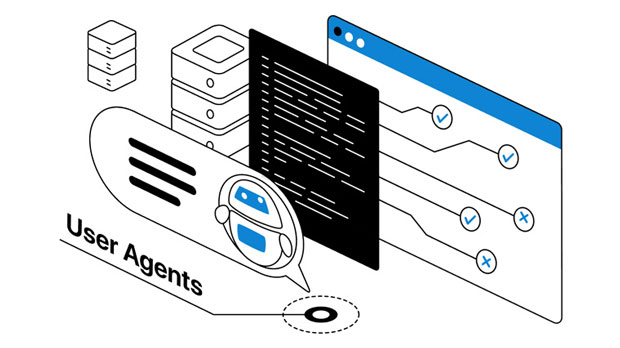In today's digital age, protecting your personal privacy while browsing the internet is increasingly important. One effective method to safeguard your anonymity online is by using a socks5 proxy. A Socks5 proxy allows users to route their internet traffic through an intermediary server, which masks their real IP address and provides additional layers of security. Setting up a Socks5 proxy is a relatively simple process, but it is crucial to ensure proper configuration to maximize its privacy benefits. This guide will walk you through the steps of setting up a Socks5 proxy and explain how it can be used to secure your online presence. What is a Socks5 Proxy and How Does it Protect Privacy?A Socks5 proxy is a specific type of proxy server that routes internet traffic between your device and the destination server. It works by acting as an intermediary, forwarding data between the two endpoints without altering it. The “Socks5” designation refers to the version of the Socks protocol it uses, which is known for its ability to handle various types of traffic, including TCP and UDP, and work with any type of internet traffic, including web browsing, file sharing, and gaming.What makes Socks5 distinct from other types of proxies is its ability to mask your IP address and encrypt your data. By using a Socks5 proxy, your real IP address is replaced with that of the proxy server, which helps keep your identity and location hidden. This becomes especially important when accessing websites or services that track users’ IP addresses for purposes such as geographic location targeting, browsing history analysis, or surveillance. Additionally, Socks5 does not encrypt traffic by default, but it can be combined with other encryption methods like SSL/TLS for added security.The Benefits of Using a Socks5 Proxy for Privacy ProtectionUsing a Socks5 proxy offers several key benefits, particularly when it comes to privacy protection:1. IP Address Masking: By hiding your real IP address, a Socks5 proxy makes it difficult for websites and online services to track your online activity. This is essential for maintaining anonymity when browsing sensitive content or accessing services in regions with strict censorship.2. Bypassing Geographic Restrictions: Many websites and streaming platforms restrict access to their content based on geographic location. A Socks5 proxy allows you to access blocked content by routing your traffic through a server in a location of your choice, bypassing these restrictions.3. Secure Online Activity: Although Socks5 does not inherently encrypt data, combining it with other encryption methods enhances your online security. It can protect you when browsing on public Wi-Fi networks or accessing potentially unsecured websites.4. Improved Performance: socks5 proxies are lightweight, meaning they can provide better performance compared to other proxies, such as HTTP proxies. They are especially useful for tasks requiring high-speed internet, such as gaming or streaming.Step-by-Step Guide to Setting Up a Socks5 ProxyNow that we understand the benefits, let's dive into the steps to set up a Socks5 proxy for privacy protection. While the process may vary slightly depending on the operating system or device you are using, the following general guide will help you get started:Step 1: Choose a Reliable Socks5 Proxy ServiceTo begin, you’ll need to choose a reliable Socks5 proxy service. This step is critical, as the performance and privacy of your proxy connection depend on the quality of the service. Look for services that emphasize privacy, offer strong encryption options, and have servers located in various regions to ensure flexibility and security.Step 2: Install and Configure the Socks5 ProxyOnce you've chosen a service, you’ll need to install and configure the proxy settings. Many services provide user-friendly software or configuration files to make this process easier. If you're setting up a proxy manually, follow these steps:1. Access the Network Settings: On your device, go to the network or internet settings, depending on the operating system (e.g., Windows, macOS, or Linux).2. Input Proxy Information: You will be asked to enter the proxy server’s IP address and port number. This information will be provided by your Socks5 proxy service.3. Enable Socks5 Proxy: In the settings menu, select the option to use a proxy server, then choose the Socks5 protocol. Input the server's IP address and the port number.4. Test the Connection: After setting up the Socks5 proxy, test your connection by visiting websites like "WhatIsMyIP" to ensure that your IP address is successfully masked.Step 3: Configure Applications to Use the Socks5 ProxyTo fully benefit from your Socks5 proxy, you need to configure individual applications or web browsers to route their traffic through the proxy server. Here's how you can do it:1. Web Browsers: For web browsers like Chrome, Firefox, or Edge, you can enter the proxy settings directly in the browser's network settings. Simply input the IP address and port number of the Socks5 proxy, and your browsing traffic will be routed through it.2. Other Applications: If you are using applications such as torrent clients, gaming software, or email clients, you will need to enter the Socks5 proxy settings within each application’s network or proxy configuration. Most modern applications support Socks5 proxies, so look for the option to input a proxy address.Step 4: Test and Troubleshoot Your ConnectionAfter setting up the proxy, it’s important to test and ensure everything is working as expected. Visit websites like "WhatIsMyIP" to check if your IP address is hidden. Additionally, you may experience issues such as slow speeds or connectivity problems, especially if the proxy server is overloaded or located far away. If you encounter such issues, consider switching to a different proxy server or adjusting your settings.Limitations of Socks5 Proxy for Privacy ProtectionWhile Socks5 proxies offer significant privacy benefits, there are some limitations to be aware of:1. Lack of Built-in Encryption: By default, Socks5 proxies do not encrypt traffic, which means that your data can still be intercepted if it's not combined with other encryption protocols.2. Not a Complete Anonymity Solution: Socks5 proxies can hide your IP address, but they do not provide total anonymity. Other techniques, such as using a Virtual Private Network (VPN) or Tor, can offer additional layers of privacy protection.3. Potential for Data Leaks: Some applications may leak your real IP address despite the proxy, especially if they are not configured properly. Be vigilant when using Socks5 proxies and make sure all relevant applications are routed through the proxy.ConclusionIn conclusion, setting up a Socks5 proxy is an effective way to enhance your online privacy by masking your real IP address and securing your internet traffic. While Socks5 proxies offer several advantages, such as bypassing geographic restrictions and improving performance, it is important to be mindful of their limitations. To ensure maximum privacy, you may want to combine the use of a Socks5 proxy with other encryption methods or privacy tools. By following the steps outlined in this guide, you can begin enjoying a more secure and anonymous online experience today.
Jan 14, 2025





























































